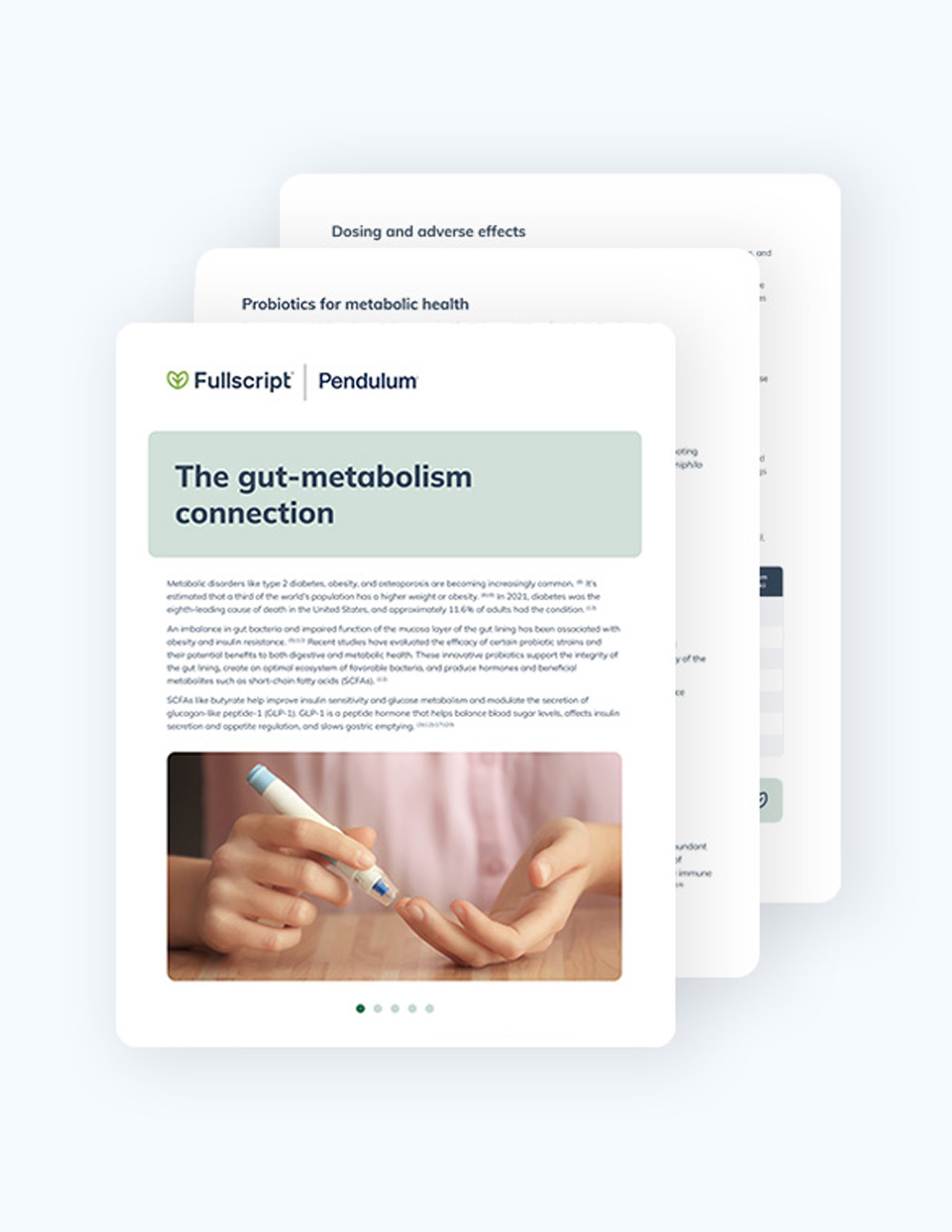The gluten-free diet has become increasingly popular, but is this diet right for you? While most people can safely consume gluten-containing foods, certain individuals may need to completely avoid gluten for health reasons. Read on to learn more about the conditions that warrant a gluten-free diet and the tips for success when following a gluten-free diet plan.
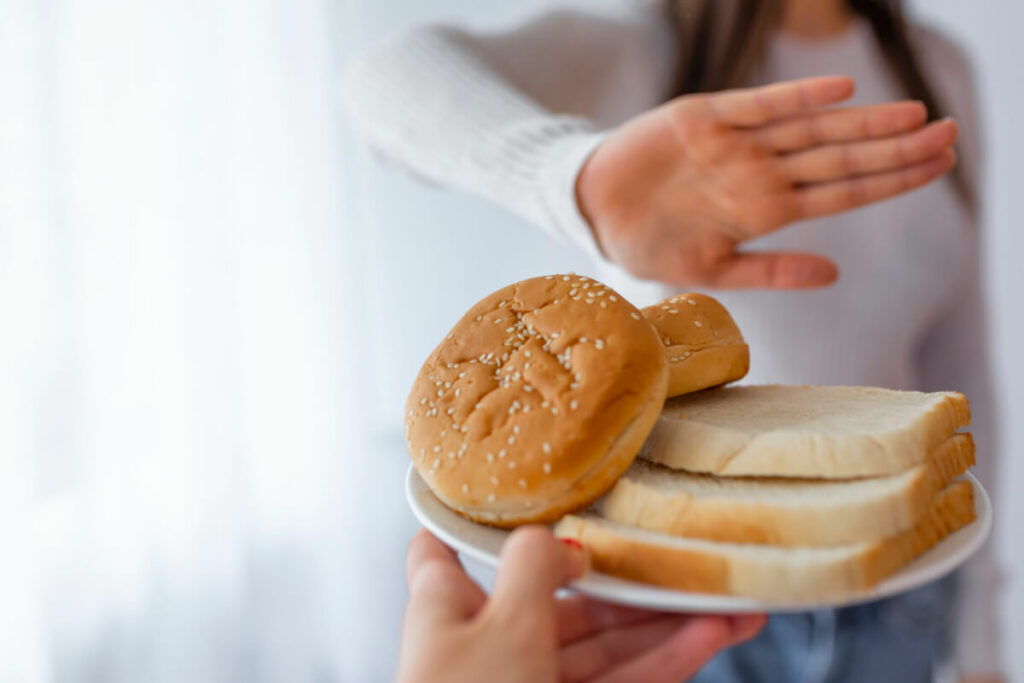
What is gluten?
Gluten is a protein found in certain grains, including wheat, barley, and rye. This protein is a major structural component of pasta, bread, and other baked goods and helps improve the quality, texture, flavor, and moisture content of some foods. Gluten is found in many common food and beverages, including:
- Beer and malt beverages
- Bread
- Breaded or battered foods (e.g., chicken nuggets, fish sticks, onion rings)
- Cereal, including corn flakes and rice puffs containing malt extract or flavorings
- Crackers and pretzels
- Flour tortillas
- Oats, if grown side-by-side with wheat and not specifically labeled “gluten-free”
- Pasta (e.g., all varieties of pasta made with wheat flour, couscous, dumplings, gnocchi, raviolis)
- Pastries and baked goods (e.g., cakes, cupcakes, cookies, donuts, muffins, pie crusts)
- Pizza
- Salad dressings
- Sauces and gravies (e.g., soy sauce, cream sauces) (6)
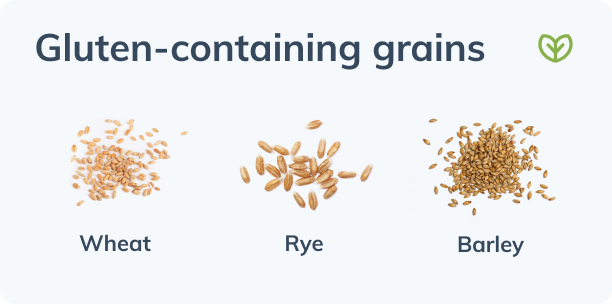
Did you know? Gluten may be found in some drugs, supplements, and certain personal care products such as lipstick, lip balm, and oral care products. (6)
What is the gluten-free diet?
The gluten-free diet involves the complete elimination of all gluten-containing foods and beverages. Popularity of gluten-free diets has surged in recent years due to increased awareness and the misunderstanding that gluten-free foods are inherently healthier than non-gluten-free foods. (7) Due to increased consumer demand, most grocery stores today offer an assortment of gluten-free products ranging from gluten-free pasta and pizza to cookies and cakes. Some restaurants have also met this demand by offering gluten-free menu selections or indicating which items on their menu are made without gluten.
It’s estimated that about 5% of individuals living in Western countries report adhering to a gluten-free diet without a recommendation or diagnosis from a practitioner. Although many individuals may choose to follow a gluten-free diet, certain people must follow a gluten-free diet for health reasons. (7)
Who should follow a gluten-free diet?
Individuals with certain health conditions, such as celiac disease, gluten sensitivity, and some autoimmune conditions, may benefit from or require strict adherence to a gluten-free diet.
Celiac disease
Celiac disease is a chronic, autoimmune condition in which the immune system abnormally reacts to the ingestion of gluten, resulting in damage to the small intestine. This damage to the small intestine can have lasting serious health effects and cause many uncomfortable symptoms, including abdominal pain, bloating, and diarrhea. (14)
The small intestine is lined with small, finger-like projections known as villi, which are responsible for facilitating nutrient absorption from food. In patients with undiagnosed or unaddressed celiac disease, the villi become flattened, known as villous atrophy, lessening their ability to absorb nutrients. Long-term, untreated celiac disease is associated with various negative health consequences such as nutrient deficiencies, certain cancers (e.g., intestinal cancer, intestinal lymphoma), infertility, neurological disorders, and osteoporosis. (17)(18) A strict, life-long gluten-free diet is currently the only treatment option available to individuals with celiac disease. Patients with celiac disease should also avoid all gluten-containing personal care products, supplements, and medications. (3)(5)
If you are experiencing symptoms of celiac disease or your practitioner suspects you may have the condition, they may perform a physical exam, order a serum antibody blood test that identifies tissue transglutaminase IgA antibodies, and/or suggest an intestinal biopsy to definitively diagnose celiac disease. (4)
Did you know? It takes approximately three to six months of following a gluten-free diet for the small intestine to heal in children with celiac disease. For adults, it can take approximately two to three years to heal the small intestine. (10)
Certain autoimmune conditions
A gluten-free diet may help slow the progression of certain autoimmune conditions. Furthermore, some individuals with celiac disease are more likely to be diagnosed with another autoimmune disease. (12) Examples of autoimmune conditions that may benefit from a gluten-free diet include:
- Addison’s disease: a condition affecting the functioning of the adrenal glands and hormone production
- Autoimmune thyroid diseases: Hashimoto’s thyroiditis (a cause of hypothyroidism) and Grave’s disease (a cause of hyperthyroidism)
- Type 1 diabetes mellitus: a condition that occurs when the pancreas produces little to no insulin
- Dermatitis herpetiformis: a chronic skin condition characterized by itchy bumps or blisters, particularly occurring on the forearms near the elbows, knees, and buttocks and worsened when gluten is ingested
- Psoriasis: a chronic skin condition that accelerates the growth cycle of skin cells, leading to thick red skin and silvery patches on the elbows, knees, scalp, face, hands, and feet
- Rheumatoid arthritis: a chronic inflammatory condition that causes swollen, painful joints
- Systemic lupus erythematosus (lupus): an autoimmune condition that causes inflammation and pain and affects various organs such as the skin, joints, kidneys, and brain (12)(16)
Gluten sensitivity and intolerance
Individuals who don’t tolerate gluten but for whom a celiac disease diagnosis has been ruled out may have a gluten sensitivity, sometimes referred to as gluten intolerance or non-celiac gluten sensitivity. Gluten sensitivity may exhibit similar signs and symptoms to celiac disease; however, gluten doesn’t appear to cause the same damaging effects to the small intestine or the long-term health complications associated with celiac disease. (14)
Wheat allergy
Wheat allergy is an allergic response to foods containing wheat. Unlike celiac disease, patients with a wheat allergy often tolerate other gluten-containing grains such as barley and rye, but they must avoid wheat entirely. (1) Depending on the severity of their allergy, some patients may experience a life-threatening reaction when exposed to wheat, known as anaphylaxis, which requires immediate treatment with epinephrine (adrenaline). (1) Although patients with a wheat allergy don’t necessarily need to follow a strict gluten-free diet, looking for gluten-free labels on products can help guide purchasing decisions and make finding wheat-free products easier.
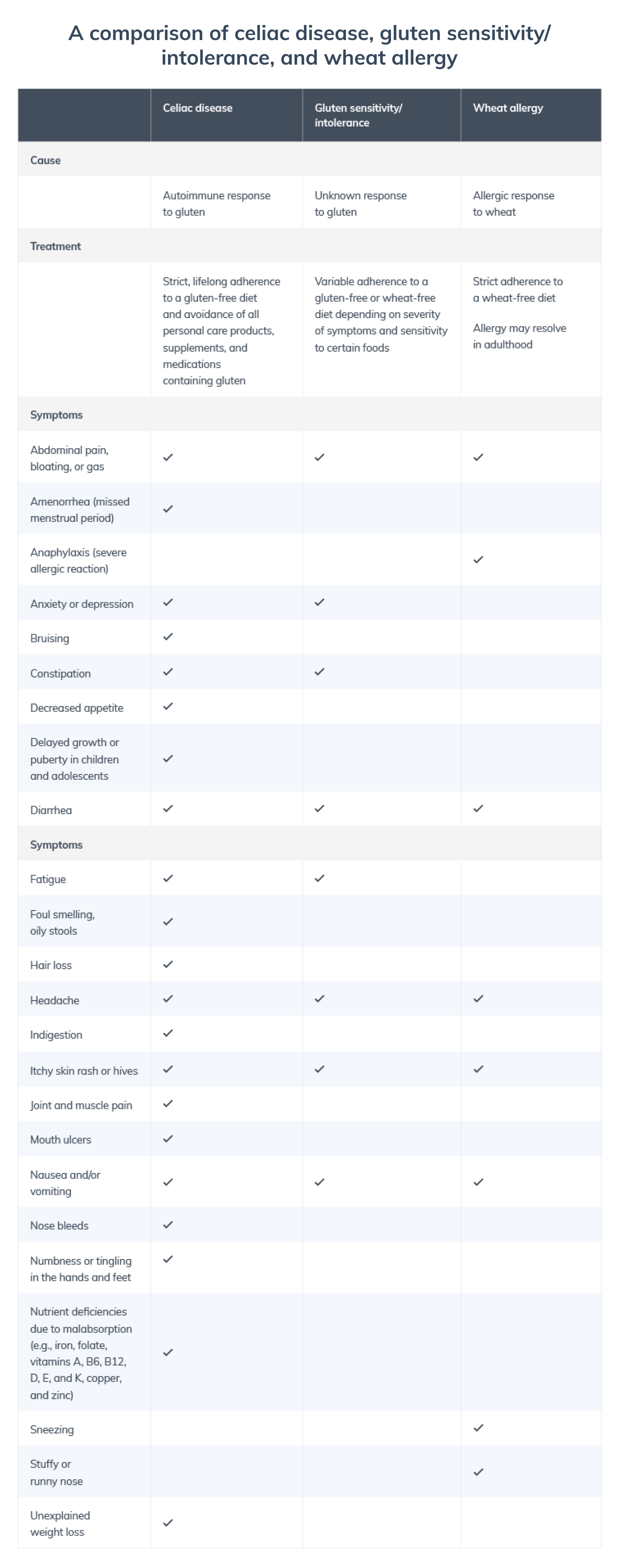
How to start a gluten-free diet plan
With some preparation and knowledge, you can confidently follow a gluten-free diet plan.
Get familiar with nutrition facts labels
To ensure that consumers who follow a gluten-free diet plan can easily find products safe for consumption, the U.S. Food and Drug Administration (FDA) established specific criteria. The FDA states that gluten-free-labeled food or beverages must contain less than 20 ppm (parts per million) of gluten, the lowest consistently detectable amount. (19)
Products labeled “free of gluten”, “no gluten”, and “without gluten” must also abide by the FDA’s criteria. Use caution with products labeled as “gluten-friendly”, “no gluten ingredients”, or “wheat-free” as they do not fall under the FDAs ruling and, therefore, may not be gluten-free. (11) Familiarize yourself with reading nutrition labels and ingredient lists as well to ensure that foods are gluten-free.
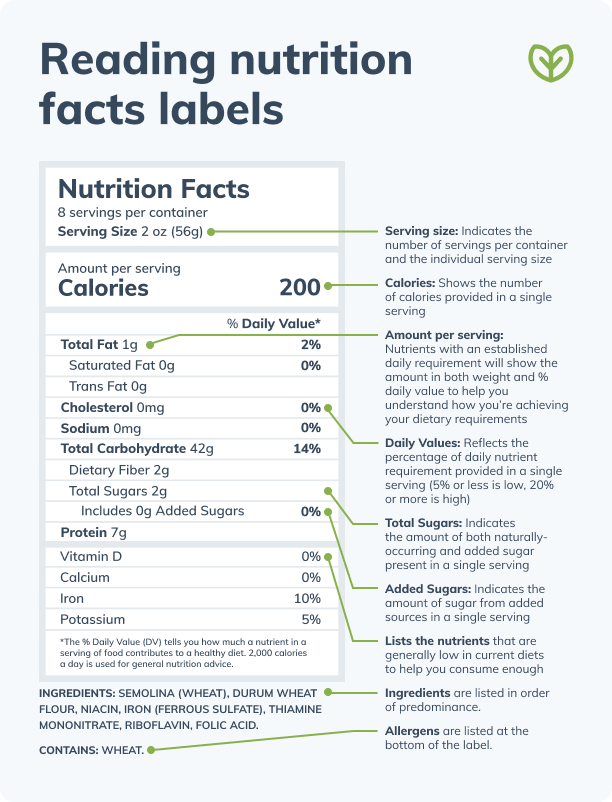
Be aware of hidden sources of gluten
Gluten may be disguised on food labels under dozens of different names. (9)(15)
For a list of common hidden sources of gluten, download this handout.
Watch out for cross-contamination
When following a strict gluten-free diet, it’s essential to avoid even small amounts of gluten. Cross-contamination between gluten-free and gluten-containing foods can happen, particularly in shared cooking spaces, restaurants, and manufacturing operations. (2) If you’re cooking in a kitchen that also includes gluten-containing foods, ensure that you thoroughly clean all surfaces, utensils, pots, and pans.
Use caution when dining out
Dining at restaurants can be challenging if you follow a strict gluten-free diet; however, it’s possible with some planning. Many restaurants offer gluten-free or gluten-friendly menu items. Check the restaurant’s website to preview their menu or give the restaurant a call in advance to see if they can safely accommodate your dietary needs. When ordering, thoroughly explain your dietary restrictions to the server and ask questions about preparation methods and ingredients.
Minimize gluten-free processed foods
Just because a food is labeled gluten-free does not mean that it’s a healthy choice. Many gluten-free cakes, cookies, and other processed foods contain just as much sugar, salt, fat, and artificial ingredients as gluten-containing options. In some cases, gluten-free processed foods may contain even more added sugar and fat, and less fiber than non-gluten free processed foods to improve their taste and texture. (8) Gluten-free processed foods are fine on occasion, but it’s best to avoid consuming them on a regular basis.

Remember that many foods are naturally gluten-free
If you’ve recently adopted a gluten-free diet, you may be feeling overwhelmed by all of the dietary changes you must make. The good news is that many healthy foods are naturally gluten-free. You can freely enjoy all sorts of foods, including fruits, vegetables, beans, legumes, gluten-free grains and pseudograins (e.g, rice, quinoa), nuts, seeds, meat, poultry, fish, seafood, eggs, and dairy products, as long as they’re prepared without gluten-containing ingredients.
The bottom line
The gluten-free diet excludes gluten-containing grains such as wheat, barley, and rye. Certain individuals, such as those with celiac disease or gluten sensitivity, should avoid gluten. If you suspect that you may have celiac disease or if you experience symptoms in response to consuming gluten, consult your integrative health care practitioner for appropriate testing and recommendations.
- American College of Allergy, Asthma, & Immunology. (2022). Wheat & gluten allergy | symptoms & treatment. https://acaai.org/allergies/allergic-conditions/food/wheat-gluten/
- Beyond Celiac. (2021). Cross-contact. https://www.beyondceliac.org/gluten-free-diet/cross-contact/
- Canadian Celiac Association. (2021). Gluten and lotions. https://www.celiac.ca/living-gluten-free/gluten-and-lotions/
- Celiac Disease Foundation. (n.d.-a). Celiac disease screening. https://celiac.org/about-celiac-disease/screening-and-diagnosis/screening/
- Celiac Disease Foundation. (n.d.-b). Gluten in medicine, vitamins & supplements. https://celiac.org/gluten-free-living/gluten-in-medicine-vitamins-and-supplements/
- Celiac Disease Foundation. (n.d.-c). Sources of gluten. https://celiac.org/gluten-free-living/what-is-gluten/sources-of-gluten/
- Diez-Sampedro, A., Olenick, M., Maltseva, T., & Flowers, M. (2019). A Gluten-Free diet, not an appropriate choice without a medical diagnosis. Journal of Nutrition and Metabolism, 2019, 1–5.
- el Khoury, D., Balfour-Ducharme, S., & Joye, I. J. (2018). A review on the Gluten-Free diet: Technological and nutritional challenges. Nutrients, 10(10), 1410.
- Food Allergy Research & Education. (2022, July 30). Wheat. https://www.foodallergy.org/living-food-allergies/food-allergy-essentials/common-allergens/wheat
- Genetic and Rare Diseases Information Center. (n.d.). Celiac disease – about the disease. https://rarediseases.info.nih.gov/diseases/11998/celiac-disease/
- Jones, A. L. (2017). The Gluten-Free diet: Fad or necessity? Diabetes Spectrum, 30(2), 118–123.
- Lauret, E., & Rodrigo, L. (2013). Celiac disease and autoimmune-associated conditions. BioMed Research International, 2013, 1–17.
- MedlinePlus. (n.d.-a). Celiac disease – sprue. https://medlineplus.gov/ency/article/000233.htm
- MedlinePlus. (n.d.-b). Gluten sensitivity. https://medlineplus.gov/glutensensitivity.html
- MedlinePlus. (n.d.-c). Learn about gluten-free diets. https://medlineplus.gov/ency/patientinstructions/000813.htm
- MedlinePlus. (n.d.-d). Systemic lupus erythematosus. https://medlineplus.gov/ency/article/000435.htm
- Parzanese, I., Qehajaj, D., Patrinicola, F., Aralica, M., Chiriva-Internati, M., Stifter, S., Elli, L., & Grizzi, F. (2017). Celiac disease: From pathophysiology to treatment. World Journal of Gastrointestinal Pathophysiology, 8(2), 27.
- Schuppan, D., & Zimmer, K. P. (2013). The diagnosis and treatment of celiac disease. Deutsches Ärzteblatt International, 110(49), 835–846.
- U.S. Food and Drug Administration. (2021). Gluten-free means what it says. https://www.fda.gov/consumers/consumer-updates/gluten-free-means-what-it-says






